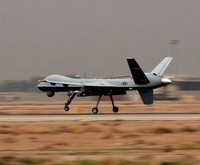In the run-up to Sept. 11, 2001, the CIA and the 15 other agencies of the U.S. intelligence community were increasingly preoccupied by the terrorist threat emanating from the Middle East. The previous decade had represented a long and difficult transition for U.S. intelligence from the requirements of Cold War espionage and denied-area tradecraft as well as the more brutal operational tasks associated with helping the Afghan mujahedeen chase the Soviets from Afghanistan. Al-Qaida’s brutal attacks on the U.S. Embassies in Dar-es Salaam and Nairobi in 1998 and on the USS Cole in 2000 had already raised the alarm. But the CIA had downsized radically after the Cold War ended with the collapse of the Soviet Union in 1991, and our understanding of the new Islamist terrorist threat was slow to build. U.S. intelligence was further hampered by poor capability in the languages of the region and the fact that human intelligence sources for use against the al-Qaida threat could not be found operating in the traditional locations U.S. intelligence employed to meet people overseas. Unlike potential double agents during the Cold War, for instance, there were no terrorists coming to U.S. Embassy cocktail parties.
Though the U.S. had been well-positioned in Afghanistan and Pakistan during the covert action to support the mujahedeen and still had friends on the ground in 2001, we had diminished our influence by almost completely withdrawing our presence in the mid- to late-1990s.
After Sept. 11, of course, we came alive again in the region. Just 17 days after the attacks, Gary Schroen led a team of eight CIA operations officers into the Panjshir Valley in Northern Afghanistan to link up with Tajik and Uzbek members of the Northern Alliance and help them drive the Taliban south through Kabul to Tora Bora, with Osama bin Laden and his entourage also fleeing before U.S. and Northern Alliance forces. It was a remarkable success. On horseback and camels, the CIA, subsequently joined by U.S. Special Forces units, chased the Taliban and al-Qaida to the border with Pakistan, using laser technology to paint the opposition Taliban troop concentrations so that U.S. Air Force bombers could take them out with smart bombs. All went well, until we were slowed by the precipitous terrain and caves of Tora Bora, allowing bin Laden to slip across the frontier into Pakistan.

